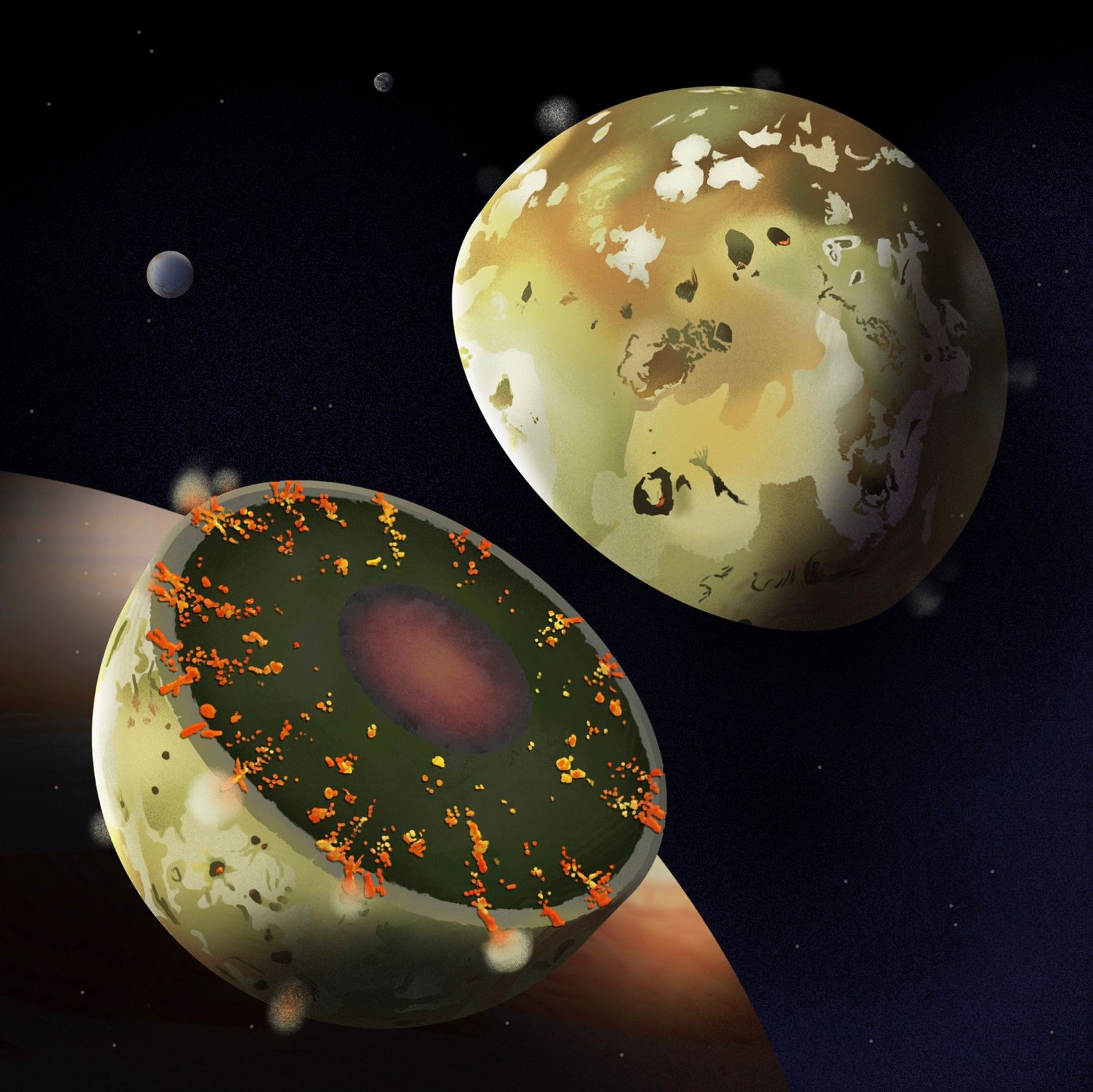
Beneath the surface of the Jovian moon Io there is no ocean of liquid magma as had been thought until now, but an almost solid mantle. This was revealed in a study published in Nature, led by Ryan Park of NASA's Jet Propulsion Laboratory, in which several researchers from the University of Bologna, the Sapienza University of Rome and the National Institute of Astrophysics (Inaf) also took part. The result is based both on historical data from the Galileo mission and on data from two recent close flyovers by the Juno mission, together with a series of astrometric observations.
Io is a unique satellite in the Jupiter system due to its intense volcanic activity, making it the most geologically active object in the Solar System. This phenomenon is fuelled by Jupiter's enormous gravitational pull along Io's eccentric orbit. For decades, it was believed that Jupiter's influence was sufficient to ‘melt’ Io's interior, thus creating an ocean of magma beneath its surface. This theory was also confirmed by the observations made by NASA's Galileo mission, which explored the Jupiter system between 1995 and 2003. Based on magnetic induction measurements, the data collected by Galileo had in fact suggested the presence of an ocean of magma on Io.
Alessandro Mura (IAPS-INAF Rome), scientific coordinator of the Jiram instrument on board the Juno probe, says: ‘We have understood how tidal heating affects the interior of a moon like Io, with implications for the past history of Earth's moon as well. The result published today in Nature disproves the hypothesis that Io's volcanic activity is fuelled by a global ocean of magma and shows that tidal forces do not universally create global oceans of magma, even on exoplanets and super-Earths where such structures had been hypothesised'.
In short, the collected data indicate that the hypothesised global magma ocean does not exist. On the contrary, the new estimates are consistent with the presence of a nearly solid mantle beneath Io's surface.
Translated with DeepL.com (free version)
Read the full paper:
“Io’s tidal response precludes a shallow magma ocean”, di R. S. Park, R. A. Jacobson, L. Gomez Casajus, F. Nimmo, A. I. Ermakov, J. T. Keane, W. B. McKinnon, D. J. Stevenson, R. Akiba, B. Idini, D. R. Buccino, A. Magnanini, M. Parisi, P. Tortora, M. Zannoni, A. Mura, D. Durante, L. Iess, J. E. P. Connerney, S. M. Levin e S. J. Bolton

